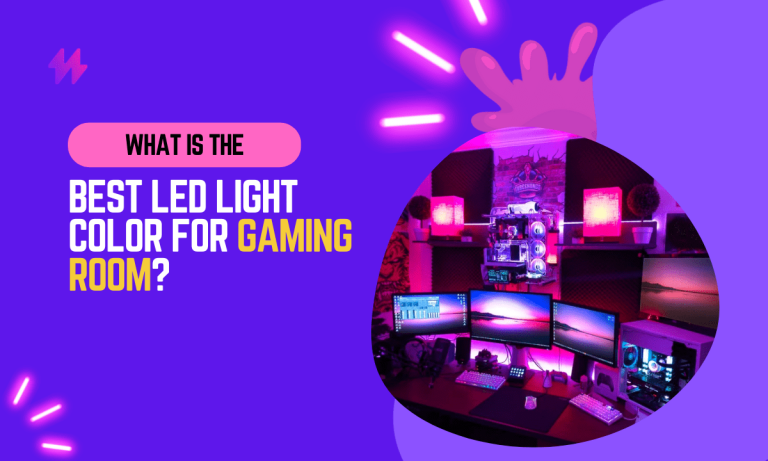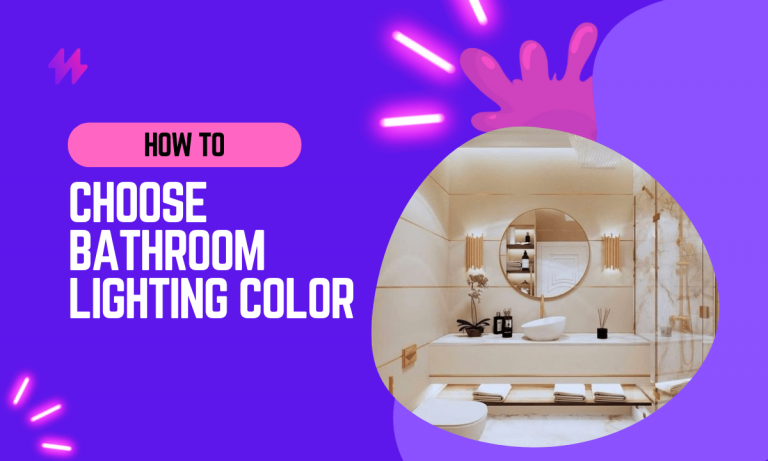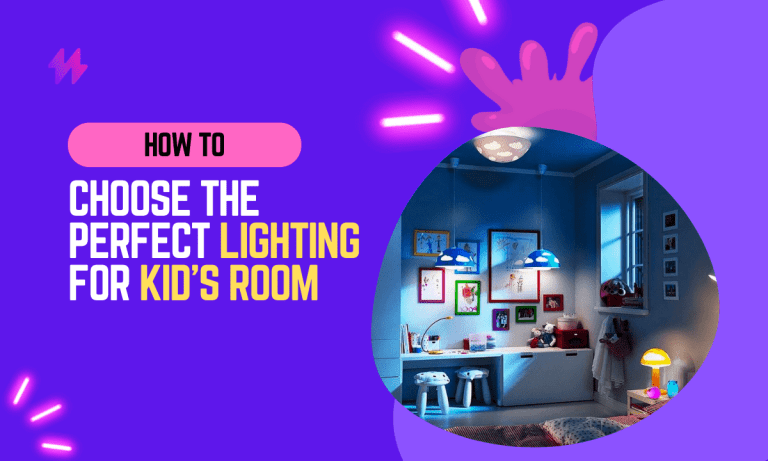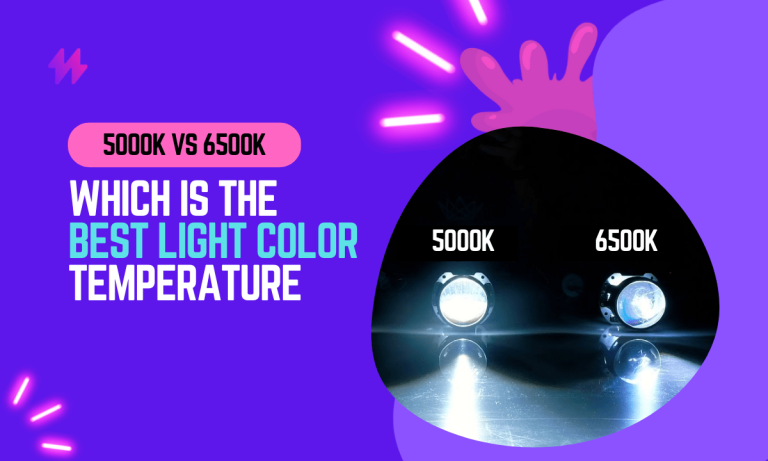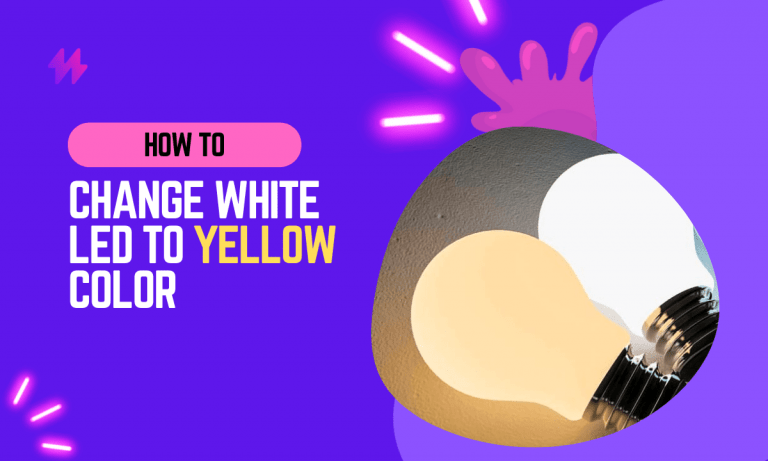2700K vs 5000K: Differences in Light Temperature
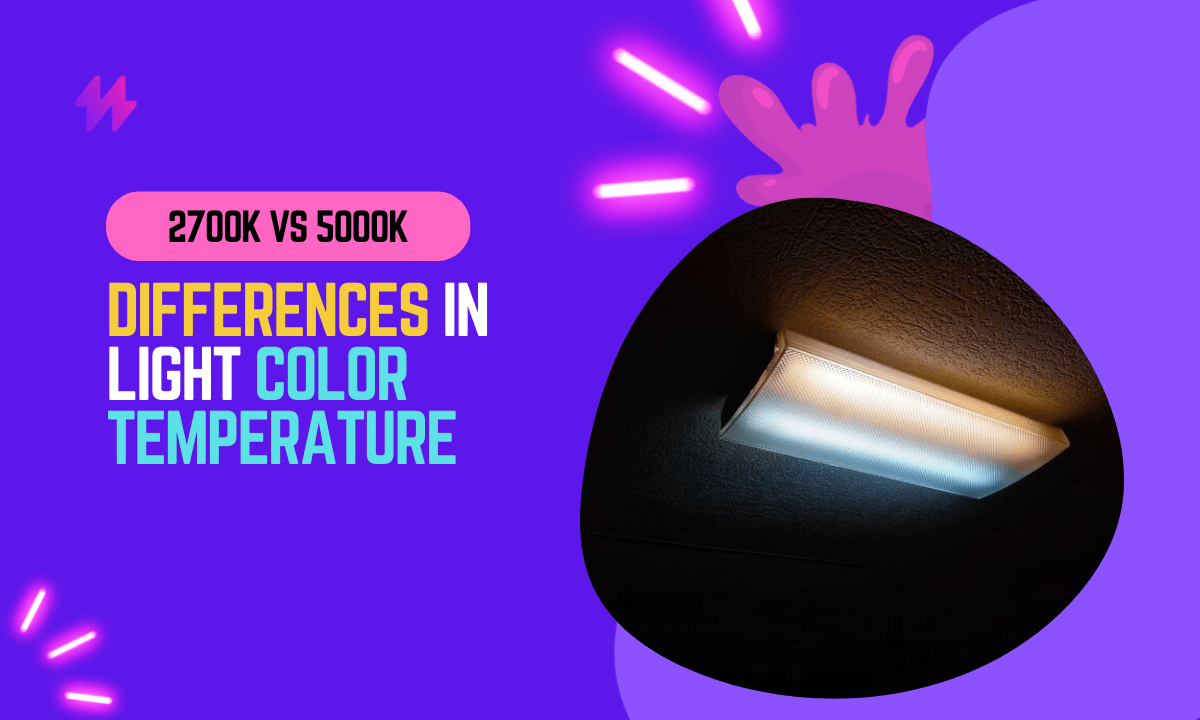
Lighting is important for how we see things, feel, work, and stay healthy daily.
The color temperature of lighting is measured in Kelvins (K). It indicates the warmth or coolness of the light emitted by a source. Among the various light temperatures available, 2700K and 5000K are two popular options.
This blog post explores light temperatures and compares warm 2700K with cool 5000K options. Understanding these differences will give you essential knowledge. This knowledge can help you make intelligent choices when selecting lighting for your home, office, or other area.
Our primary goal is to provide you with a comprehensive understanding of the contrasts between 2700K and 5000K lighting. You can gather the necessary information by studying the features, uses, advantages, and disadvantages of different light temperatures. This information will help you choose the perfect light temperature for your requirements.
Whether you want to create a cozy and inviting atmosphere in your living room or require bright and energizing light for a workspace, this blog explains the differences between 2700K and 5000K light temperatures and how they can create different atmospheres.
Relationship Between Light Temperature and Color Appearance
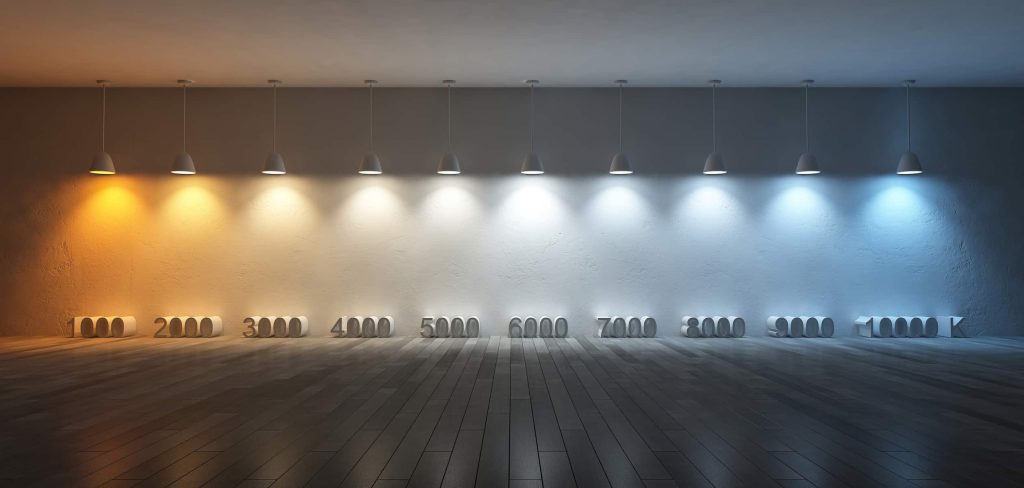
The color appearance created by different light temperatures results from how our eyes perceive light. Warm light temperatures, such as those below 3000K, produce a cozy and intimate atmosphere reminiscent of candlelight or sunset. These sounds make you feel warm, relaxed, and comfortable, so they’re great for homes, like bedrooms, living rooms, and restaurants.
On the other hand, cool light temperatures above 4000K give off a bright, energetic, and daylight-like illumination. This type of lighting often associates with improved focus, productivity, and alertness. People often see it in offices, stores, and hospitals, where clear visibility and attention to detail are essential.
2700K vs 5000K Lighting Color: Comparison Table
The table provides a general idea. However, there might be variations based on the type of lights, bulb quality, and personal opinion.
| Aspect | 2700K Lighting | 5000K Lighting |
| Color Appearance | Warm, yellowish glow | Cool, daylight-like illumination |
| Mood | Cozy, inviting | Bright, energetic |
| Ambiance | Relaxed, intimate | Stimulating, focused |
| Primary Applications | Residential spaces | Workspaces, offices, retail |
| Suitable for | Bedrooms, living rooms, dining areas | Offices, workstations, retail stores |
| Visual Impact | Enhances warmth and comfort | Promotes alertness and focus |
| Eye Strain | Less likely | Reduces eye strain |
| Color Accuracy | May slightly affect color vibrancy | Provides accurate color rendering |
| Preferred by | Those seeking a cozy and relaxed atmosphere | Individuals desiring productivity and focus |
| Task Performance | Limited visibility for tasks requiring high brightness | Provides clear visibility and acuity |
| Personal Preference | Appeals to those who prefer warm lighting | Appeals to those who prefer cool and bright lighting |
| Flexibility | Can be combined with other light temperatures | May require additional lighting options for different purposes |
| Commonly Used | Residential bedrooms, living rooms, dining areas | Offices, workspaces, retail environments |
| Lighting Design | Creates a cozy and intimate environment | Enhances visual clarity and attention to detail |
Also read: Is 4000K LED Good for Plants? Comprehensive Guide
2700K LED Light Color Temperature
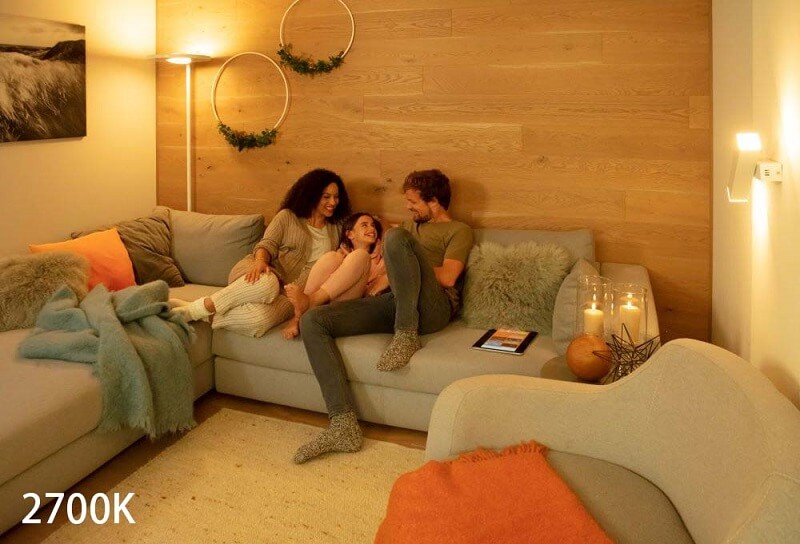
People often describe 2700K light as warm, soft, and cozy. It emits a yellowish or amber hue that resembles traditional incandescent bulbs’ color. This cozy light makes rooms feel calm and welcoming and is commonly used in homes, such as bedrooms, living rooms, and dining areas.
One notable characteristic of 2700K light is its ability to create a comforting and intimate atmosphere. The soft light creates a cozy and relaxing atmosphere in a room. It is perfect for unwinding or creating a peaceful ambiance during social events.
Applications of 2700K Lighting:
Due to its warm and soothing qualities, 2700K lighting finds widespread use in various settings. Here are a few typical applications:
- Residential Spaces: 2700K light is suitable for bedrooms, creating a calm atmosphere for sleep and relaxation. It can also add a cozy touch to living rooms, enhancing the comfort and warmth of the space. Additionally, it is a popular choice for dining areas, providing a pleasant ambiance for meals and gatherings.
- Hospitality and Restaurants: Hotels, resorts, and restaurants often incorporate 2700K lighting to create a welcoming and intimate atmosphere for guests. It creates a cozy and welcoming atmosphere, making guests feel comfortable and improving their dining or staying experience.
- Decorative Lighting: 2700K light is often used in decorative fixtures like table lamps, wall sconces, and pendant lights. These fixtures provide functional illumination and add a touch of warmth and aesthetics to a room’s decor.
Advantages and Disadvantages of 2700K Lighting
Like any other light temperature, 2700K has its strengths and limitations. Here are a few advantages and disadvantages to consider:
Advantages:
- Creates a cozy and inviting atmosphere.
- Enhances relaxation and comfort in residential spaces.
- Mimics the warm glow of traditional incandescent bulbs.
- It can be visually appealing and complement warm-colored interiors.
Disadvantages:
- It may not provide sufficient brightness for tasks requiring high visibility.
- Colors may appear slightly less vibrant compared to cooler light temperatures.
- Not as suitable for spaces that require a crisp and energizing illumination.
5000K LED Light Color Temperature
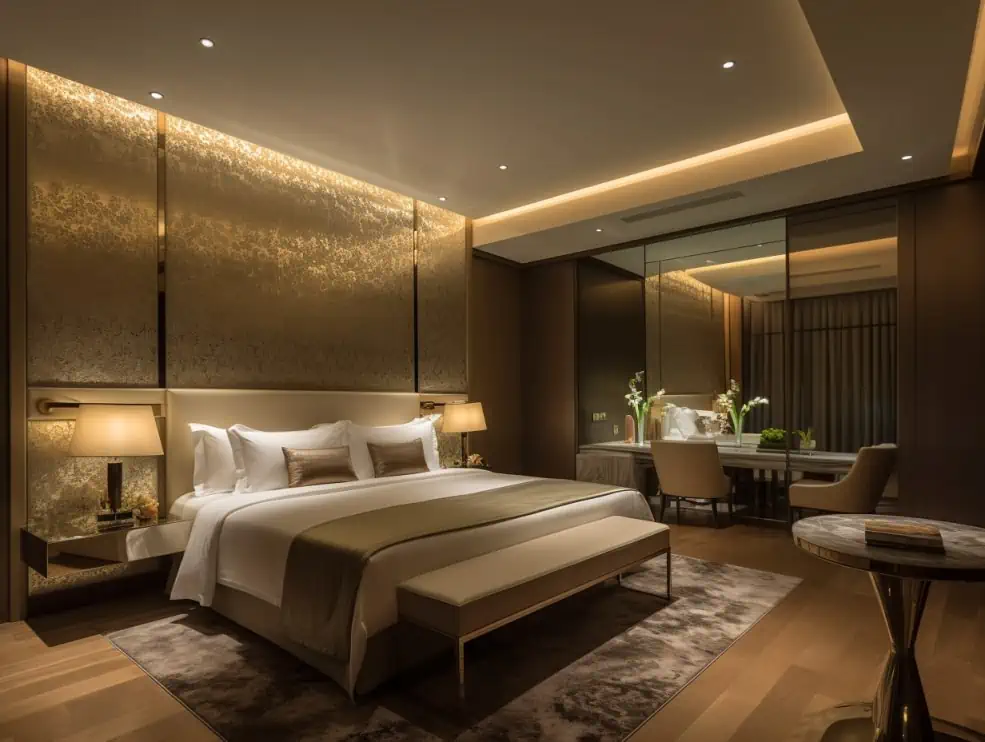
5000K light is often referred to as cool or daylight-like. It emits a bright, crisp illumination with a slightly bluish or whitish tone. This light temperature closely resembles natural daylight, providing a sense of alertness, focus, and energy. Its cool and vibrant appearance makes it a popular choice for spaces that require clarity and visibility.
One characteristic of 5000K light is its ability to create a sense of brightness and stimulate productivity. Cool and refreshing illumination can help individuals stay alert, improve concentration, and promote visual acuity. Workspaces, retail environments, and areas where precise tasks or activities occur are commonly associated with them.
Applications of 5000K LED Lighting
5000K lighting finds extensive use in various settings where clear visibility and enhanced focus are essential. Here are a few common applications:
- Offices and Workspaces: 5000K light is often employed in offices, cubicles, and workstations to simulate natural daylight and promote productivity. Its cool and crisp illumination can help reduce eye strain, improve mental alertness, and foster a conducive work environment.
- Retail Stores and Showrooms: 5000K lighting is commonly used in stores to make products noticeable and create a friendly atmosphere. It improves color accuracy, helping customers see products as they would in natural light.
- Medical and Dental Facilities: In healthcare, 5000K lighting is often used for accurate examination, diagnosis, and treatment. The cool and bright illumination aids in accurate color rendering and visual clarity, which are crucial in these professional environments.
Advantages and Disadvantages of 5000K Lighting
Like any other light temperature, 5000K has its benefits and considerations. Here are a few advantages and disadvantages to take into account:
Advantages:
- Provides a bright and energizing illumination.
- Simulates natural daylight, enhancing focus and productivity.
- Enhances visual acuity and color accuracy.
- Well-suited for spaces where clarity and visibility are crucial.
Disadvantages:
- It may not create a cozy or relaxing ambiance.
- It can appear stark or harsh in specific residential or intimate settings.
- Colors may appear cooler or bluish, potentially altering the perceived color scheme.
Comparing 2700K vs 5000K Lighting Color Temperature
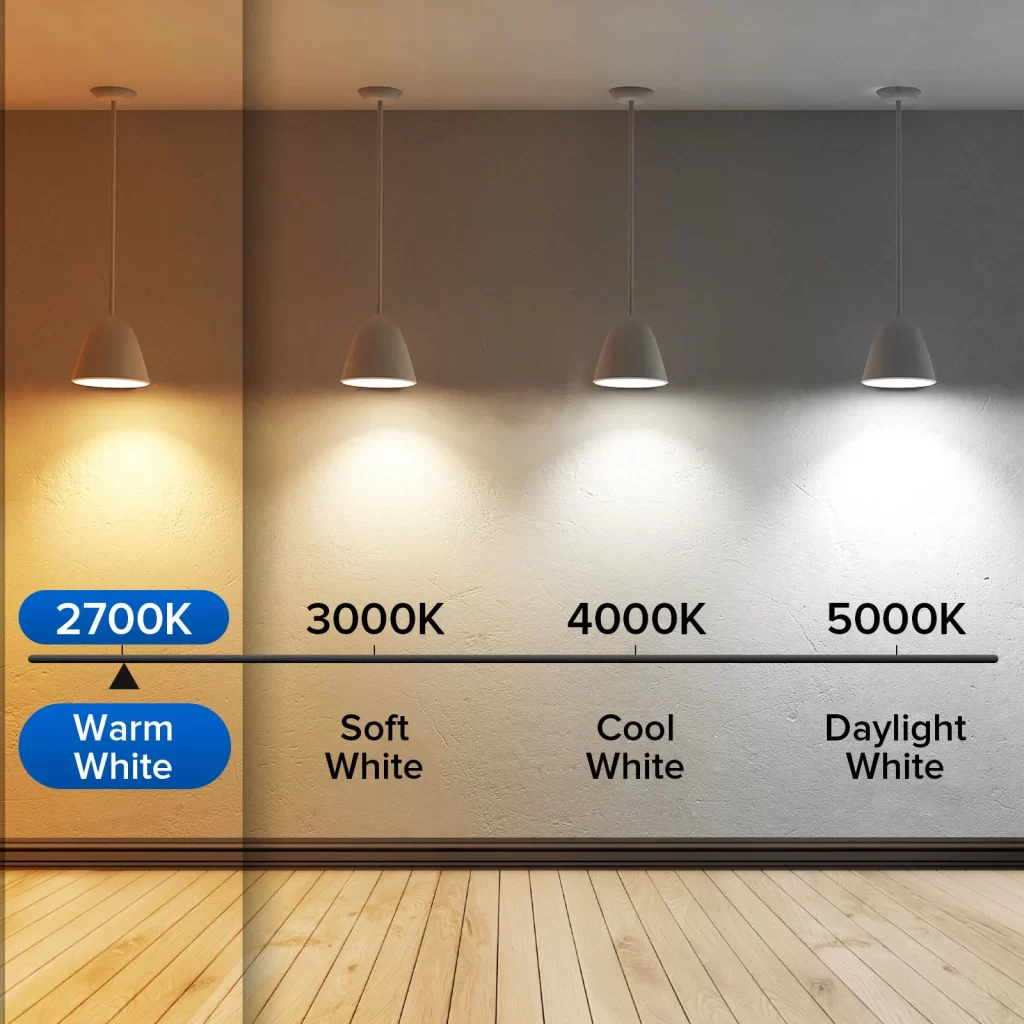
One of the primary distinctions between 2700K and 5000K lighting lies in their color appearance and the moods they create. 2700K emits a warm, yellowish light similar to candlelight or sunset. On the other hand, 5000K emits a cool, daylight-like light with bluish or whitish tones.
The warm hues of 2700K lighting create a cozy and inviting atmosphere, perfect for creating a relaxing ambiance in residential spaces. It can help evoke feelings of comfort, intimacy, and warmth. On the other hand, 5000K lighting’s cooler tones provide a brighter and more energizing illumination, stimulating focus and productivity. It creates a sense of alertness and can be ideal for workspaces and environments where visual acuity is crucial.
You may also like: 4000K vs 5000K LED Color Temperature Comparison
Impact on Human Perception and Productivity
The light temperature significantly impacts human perception, mood, and productivity. Our brains are wired to respond differently to warm and cool light.
2700K lighting, with its warm tones, tends to promote relaxation, calmness, and comfort. It can be conducive to winding down, unwinding, and creating a soothing environment for relaxation and leisure activities. In residential settings, this light temperature can help create a cozy and intimate atmosphere for relaxation or socializing.
On the other hand, 5000K lighting’s cooler tones mimic natural daylight, enhancing alertness, concentration, and overall productivity. This light temperature is often preferred in workspaces, offices, and environments where visual tasks and detailed work are performed. The cool illumination helps reduce eye strain and boost focus, making it easier to stay attentive and engaged.
Considerations for Specific Environments
When choosing between 2700K and 5000K lighting, it is crucial to consider the specific environment and its requirements.
- Residential Settings: 2700K lighting is well-suited for creating a warm and inviting atmosphere in bedrooms, living rooms, and dining areas. It promotes relaxation and comfort, enhancing the coziness of these spaces.
- Workspaces and Offices: 5000K lighting is commonly used in offices, workstations, and other professional settings to replicate natural daylight. It supports productivity, focus, and visual clarity, making it easier to perform tasks that require accuracy and attention to detail.
- Retail and Commercial Spaces: The lighting choice depends on the desired atmosphere and the products or services sold. 2700K creates a cozy atmosphere, while bright light showcases products with accurate colors.
How to Choose the Right Light Temperature between 2700K and 5000K?

Consider factors to choose the right light temperature (2700K vs 5000K) for your needs. These factors include:
Purpose of the Space
Consider the atmosphere and feeling you wish to establish in the area. Is it a residential area for relaxation and comfort or a workspace requiring focus and productivity? Understanding the purpose will guide you toward the most suitable light temperature.
Desired Atmosphere
Think about the ambiance and mood you want to create in the space. Do you prefer a warm and cozy feel or a bright and energetic environment? The light temperature significantly contributes to the atmosphere, so consider the desired emotional and visual impact.
Activities and Tasks
Consider the activities and tasks performed in the space. Different tasks may require varying levels of visual acuity and focus. For detailed work or activities that need clarity, use a cooler light temperature like 5000K. A warmer light temperature, like 2700K, is preferable for areas focused on relaxation or socializing.
Personal Preference
Individual preferences play a vital role in selecting the right light temperature. Some individuals naturally gravitate towards warmer, cozy lighting, while others prefer cooler, more stimulating illumination. Consider what visually and emotionally appeals to you. This will impact your satisfaction with the room’s lighting.
Conclusion
In conclusion, the choice between 2700K and 5000K light temperatures significantly impacts the ambiance and functionality of any space, highlighting the importance of selecting the right color temperature for specific settings and needs. A 2700K light, with its warm white glow, is akin to the light cast by traditional incandescent bulbs. It creates a cozy and inviting atmosphere, ideal for residential areas like living rooms and bedrooms where a relaxing environment is paramount. This warmer light tends to enhance reds and yellows, making it excellent for evening settings where softer light is preferable to create a calming effect conducive to winding down.
On the other hand, 5000K lights emit a much cooler, daylight-like color temperature that resembles natural sunlight. This type of lighting is particularly beneficial in environments requiring precision and alertness, such as offices, kitchens, and other workspaces. The crisp and vibrant nature of 5000K lighting helps in reducing eye strain and increasing productivity, which makes it suitable for tasks involving reading or intricate detail work. Moreover, the cooler light enhances blues and whites, making it ideal for areas that benefit from a bright, vibrant atmosphere that stimulates mental activity. Understanding these distinctions and considering the psychological effects of light can guide individuals and designers in choosing the appropriate lighting setup that not only meets the practical requirements of their activities but also enhances the overall mood and aesthetic of the space.


